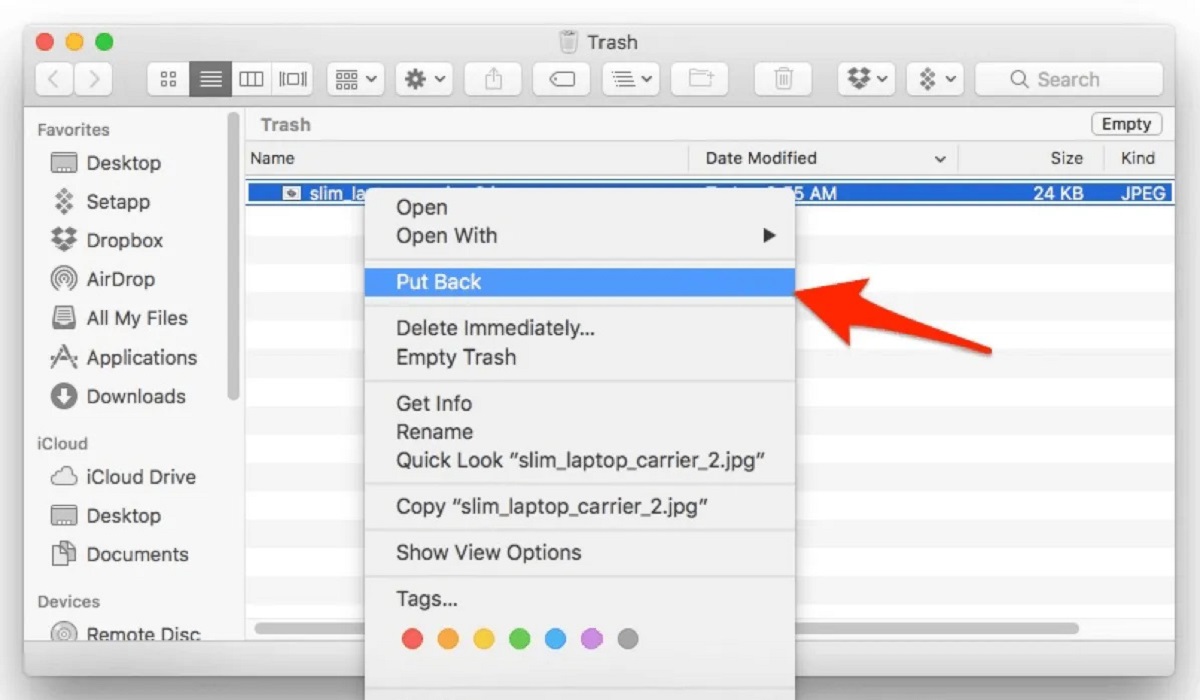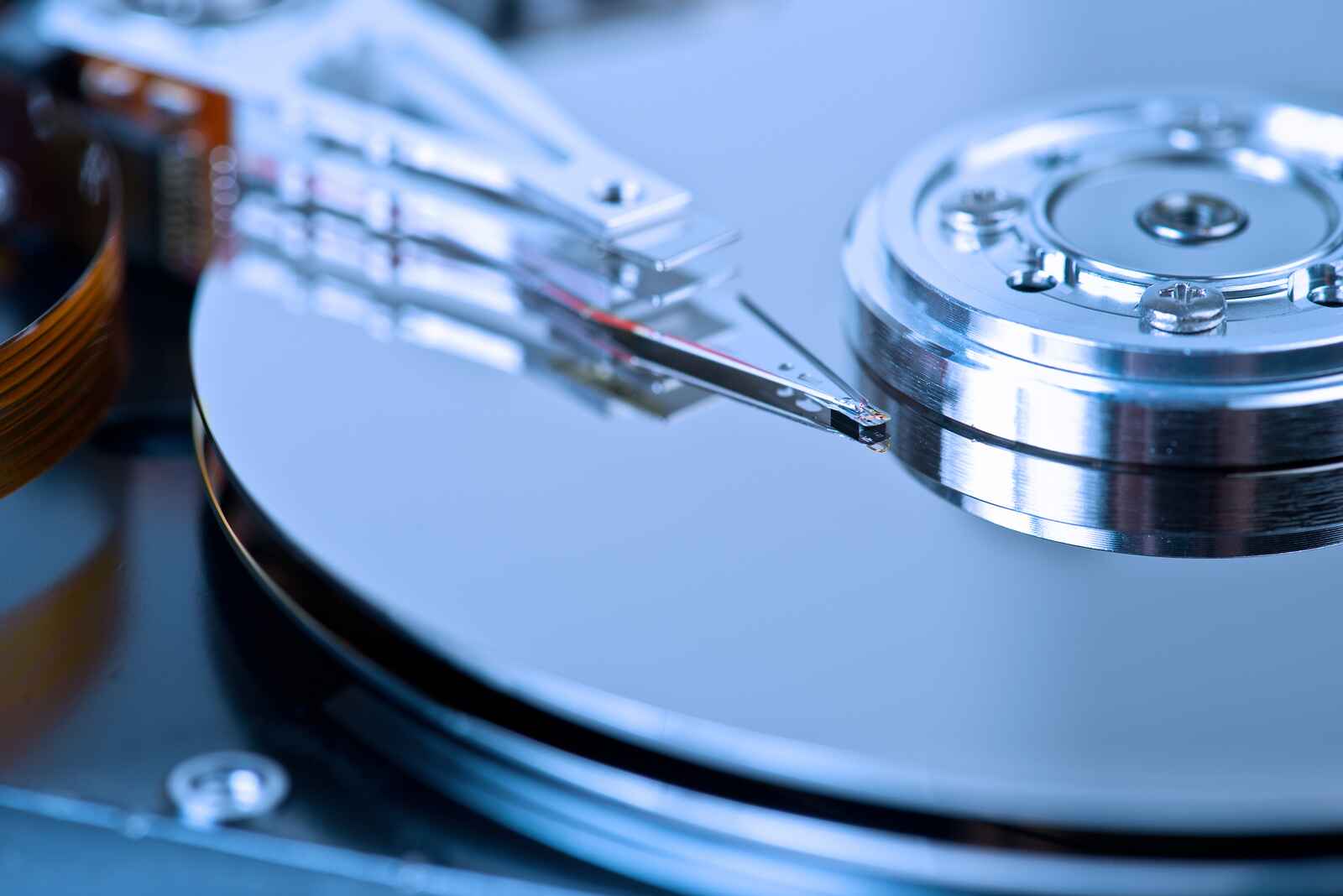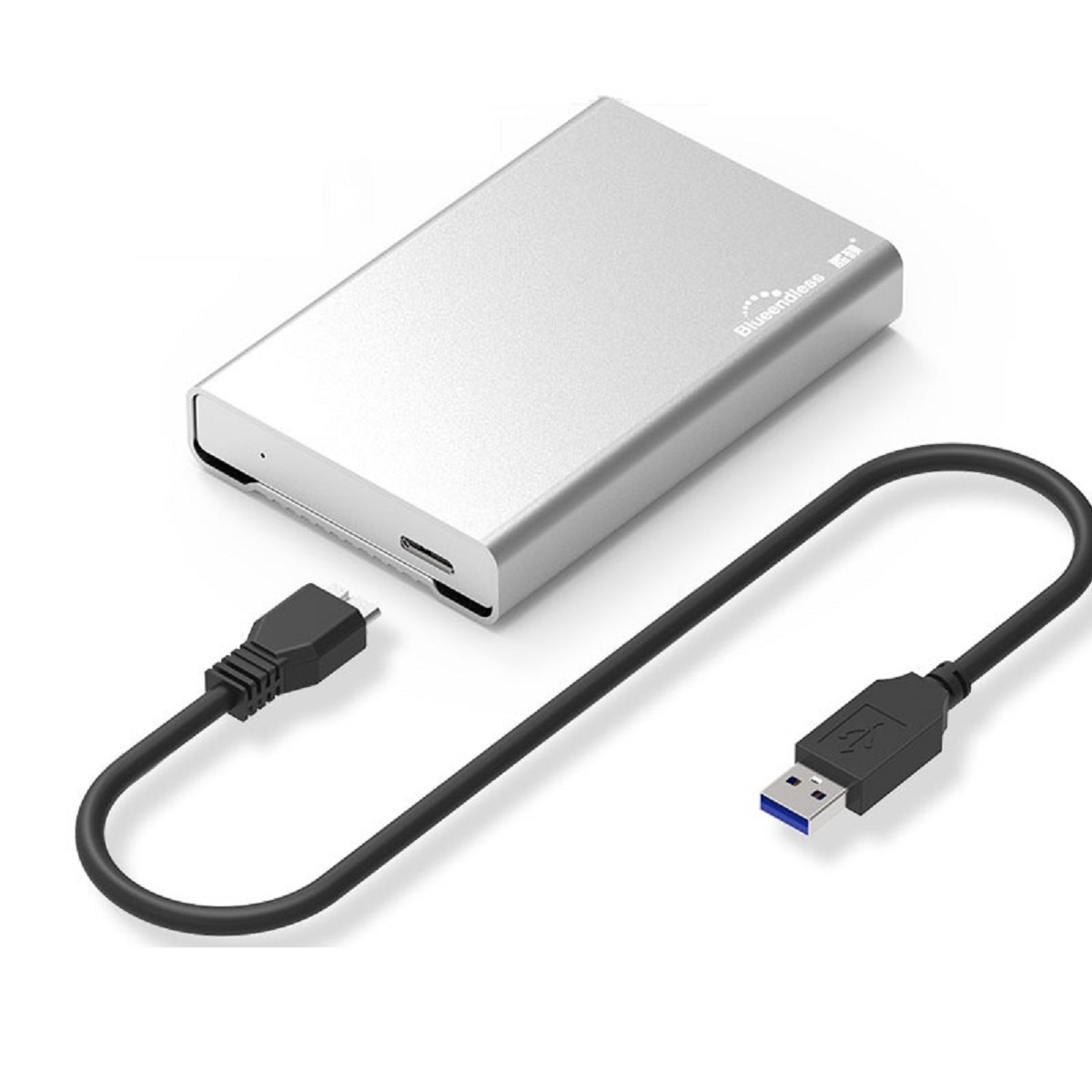Introduction
Accidentally deleting important files from your external hard drive can be a frustrating and panic-inducing experience. Luckily, with the right knowledge and tools, you can often restore deleted files and regain access to your valuable data.
Before diving into the methods of file restoration, it is essential to understand the factors to consider before attempting the process. Firstly, it’s crucial to stop using the external hard drive as soon as you realize the files are missing. Continued usage can potentially overwrite the deleted data, making it harder to recover. Secondly, the success of file restoration depends on various factors such as the duration since the files were deleted, the type of files, and the storage capacity of the device.
In this article, we will explore three common methods to restore deleted files from an external hard drive. These methods include restoring files from the Recycle Bin, using file recovery software, and seeking professional data recovery services. Each method has its own advantages and limitations, so it’s important to choose the most suitable option based on your needs and capabilities.
Restoring files from the Recycle Bin is the simplest method and should be the first step when attempting file recovery. When you delete files from the external hard drive, they are often sent to the Recycle Bin. By accessing the Recycle Bin and restoring the files, you can quickly retrieve them without much hassle.
If your files have been permanently deleted from the Recycle Bin or bypassed it altogether, you can turn to file recovery software. These programs are specifically designed to scan your external hard drive for deleted files and recover them. They employ advanced algorithms to locate and restore lost data, increasing the chances of successful recovery.
However, in some cases, the damage or complexity of data loss may require professional data recovery services. These services are provided by experts who have the expertise and specialized tools to recover data from a wide range of scenarios, including physical damage to the external hard drive.
Throughout the file restoration process, it’s important to take certain precautions to avoid further damage and maximize the chances of successful recovery. This includes avoiding any write operations on the external hard drive, as well as using a different storage device to store the recovered files. Additionally, it’s advisable to create a backup of the recovered files to prevent future data loss.
By following the right approach and considering the factors discussed in this article, you can increase your chances of successfully restoring deleted files from your external hard drive. However, prevention is always better than cure. It’s essential to regularly back up your data and implement proper file management practices to minimize the risk of data loss in the future.
Factors to Consider Before Attempting File Restoration
Before embarking on the journey to restore deleted files from your external hard drive, there are a few important factors to take into consideration. These factors can significantly impact the success and feasibility of the file restoration process.
Firstly, it is crucial to determine the time frame since the files were deleted. The longer the time period, the higher the chances of the deleted files being overwritten by new data. Therefore, if you have recently realized the files are missing, it is recommended to act quickly and avoid using the external hard drive to prevent any further data overwriting.
The type of files you are trying to recover is another important factor. Some files, like documents or photos, have a higher likelihood of being successfully restored compared to complex file formats or files that have been heavily edited. This is because some file formats have intricate data structures that make their recovery more challenging.
The size of the external hard drive and its storage capacity is also a critical factor to consider. Generally, the larger the storage capacity, the more time-consuming it can be to scan and recover the deleted files. Therefore, it is important to be patient during the file recovery process, especially if you have a large external hard drive with significant amounts of data.
Additionally, the reason behind the file deletion can influence the chances of successful restoration. If the files were deleted due to a logical error like accidental deletion or a formatting mistake, there is a higher probability of recovering them. However, if the files were lost due to physical damage to the external hard drive, the recovery process can be more complex and may require professional assistance.
Lastly, it is important to assess your technical capabilities and comfort level with technology. While some file restoration methods can be done by individuals with basic computer skills, others may require a more advanced understanding of data recovery techniques. It’s crucial to be aware of your limitations and consider seeking professional help if you are unsure about the process.
By carefully considering these factors, you can better assess the feasibility and potential success of restoring deleted files from your external hard drive. It’s important to have realistic expectations and be prepared for the possibility that not all files can be fully recovered. Nonetheless, with the right approach and tools, you can increase your chances of retrieving your valuable data successfully.
Method 1: Restoring Deleted Files from the Recycle Bin
One of the simplest and most straightforward methods to restore deleted files from your external hard drive is by checking the Recycle Bin. When you delete files from your external hard drive, they are often sent to the Recycle Bin instead of being permanently erased from the system. This provides an opportunity to recover them with just a few steps.
To begin the process, connect your external hard drive to your computer and navigate to the desktop or File Explorer. Locate the Recycle Bin icon and double-click on it to open the folder. Once inside the Recycle Bin, you will find a list of deleted files that were previously stored on your external hard drive.
Next, you can perform a search or manually browse through the files to locate the ones you want to restore. Once you have identified the files you wish to recover, right-click on them and select the “Restore” option from the context menu. This will move the files back to their original location on the external hard drive.
It’s important to note that the success of this method depends on the files still being present in the Recycle Bin and not having been permanently deleted. Therefore, if you don’t find your desired files in the Recycle Bin or if the files have been deleted from it, you will need to explore alternative methods for file recovery.
Additionally, it’s advisable to check the Recycle Bin periodically, as there are settings that allow it to automatically delete files after a certain period of time or when it reaches a certain size. By monitoring the Recycle Bin regularly, you can increase your chances of recovering recently deleted files before they are permanently removed.
One important point to keep in mind is that files exceeding the storage capacity of the Recycle Bin may not be sent there and are instead permanently deleted. In such cases, it is necessary to explore other file recovery methods, such as using specialized software or seeking professional data recovery services.
Restoring deleted files from the Recycle Bin is a convenient method to recover recently deleted files without the need for additional software or technical expertise. However, it’s important to act quickly and regularly monitor the Recycle Bin to maximize your chances of successfully restoring your deleted files.
Method 2: Using a File Recovery Software
If you have been unable to restore your deleted files from the Recycle Bin or if the files have been permanently deleted, using a file recovery software can be an effective method to recover your data from your external hard drive. File recovery software is specifically designed to scan storage devices and retrieve deleted files, increasing your chances of successful file restoration.
Before proceeding with file recovery software, it’s important to note that the sooner you act, the higher the chances of successful recovery. This is because when files are deleted, they are not immediately removed from the hard drive. Instead, the space they occupy is marked as available for new data. Therefore, the longer you wait and continue using your external hard drive, the more likely the deleted files may be overwritten.
To use file recovery software, you will need to select a reliable program that suits your needs. There are various software options available, both free and paid, that offer different levels of functionality and ease of use. It’s advisable to research and choose a reputable software that has positive user reviews and features advanced scanning and recovery capabilities.
Once you have selected and installed the file recovery software on your system, you will need to connect your external hard drive to your computer and launch the software. The software will provide a user-friendly interface with options to select the drive or specific folder to scan. Select the external hard drive and initiate the scanning process.
The software will perform a deep scan of the external hard drive, searching for deleted files and recovering them if possible. The duration of the scan depends on the size of the external hard drive and the number of files it contains. It’s important to be patient and allow the software to complete the scanning process.
Once the scan is finished, the software will display a list of recoverable files. You can preview the files and select the ones you want to restore. Before proceeding with the file recovery, ensure you have a different storage device available to store the recovered files, as it’s not recommended to save them back to the same external hard drive.
Click on the “Recover” button or the equivalent option provided by the software to initiate the file restoration process. The software will transfer the recovered files to the designated storage location. Once the restoration is complete, you can access the recovered files and verify their integrity.
It’s important to note that the success of file recovery using software can vary depending on factors such as the level of data fragmentation, the duration since the files were deleted, and the complexity of the file formats. Despite the advanced algorithms employed by the software, there is no guarantee of 100% successful recovery.
Using file recovery software provides a reliable and intuitive solution to restore deleted files from your external hard drive. However, it’s important to act promptly, choose a reputable software, and avoid overwriting the deleted files to maximize your chances of successful data recovery.
Method 3: Seeking Professional Data Recovery Services
If you have been unsuccessful in restoring deleted files from your external hard drive using the previous methods or if the data loss is due to physical damage or complex software issues, it may be necessary to seek professional data recovery services. These services are provided by experts who specialize in recovering data from various storage devices, including external hard drives.
Professional data recovery services use advanced techniques and specialized equipment to retrieve deleted or inaccessible data. They have the expertise to handle complex scenarios such as physical damage to the external hard drive, corrupted file systems, or situations where software-based recovery methods have failed.
When opting for professional data recovery services, it’s important to choose a reputable and trustworthy provider. Look for a company with a proven track record of successful data recovery and positive customer reviews. You can research online or seek recommendations from reliable sources to find a suitable service provider.
Once you have selected a data recovery service, you will generally need to ship your external hard drive to their facility. It’s essential to follow their shipping instructions carefully, ensuring proper packaging to prevent further damage during transit.
At the data recovery facility, professionals will carefully examine your external hard drive and assess the extent of the data loss. They will utilize specialized tools and techniques to retrieve the deleted or inaccessible files. This may involve repairing any physical damage, rebuilding file structures, or utilizing advanced software to extract the lost data.
The data recovery process can be time-consuming, depending on the complexity of the data loss and the workload of the service provider. It’s important to be patient and maintain communication with the data recovery team to stay informed about the progress of the recovery process.
Upon successful recovery, the data recovery service will provide you with a list of recovered files for verification. They will typically transfer the recovered data to a new storage device or provide a secure download link for you to retrieve the files.
It’s important to note that professional data recovery services can be costly, as they require specialized equipment and expertise. The cost may vary depending on factors such as the complexity of the data loss, the storage capacity of the external hard drive, and the urgency of the recovery process.
If you decide to seek professional data recovery services, it’s important to ensure you have a backup of the recovered files and implement effective backup strategies in the future to prevent similar data loss scenarios.
Professional data recovery services offer a comprehensive solution for recovering deleted or inaccessible data from your external hard drive, especially in cases of physical damage or complex data loss situations. However, it’s crucial to choose a reputable service provider and be prepared for the associated costs.
Precautions to Take During the File Restoration Process
During the file restoration process, it’s crucial to take certain precautions to ensure the maximum chances of successful recovery and to avoid further damage to your files and external hard drive. By following these precautions, you can minimize the risk of data loss and enhance the overall outcome of the file restoration process.
First and foremost, it is important to immediately stop using the external hard drive as soon as you realize that files are missing or have been accidentally deleted. Continued usage of the device can potentially overwrite the deleted files, making them more difficult or even impossible to recover. Disconnect the external hard drive from your computer and avoid any write operations on the device until the file restoration process is complete.
In addition, it’s crucial to avoid using the external hard drive for any file transfers or other operations while the recovery process is underway. This includes avoiding any installation or uninstallation of software on the external hard drive. Any write operation on the device can potentially overwrite the deleted files, reducing the chances of successful recovery.
It is advisable to connect and use a different storage device to store the recovered files. This prevents any potential conflict or data overwrite that may occur if the recovered files are saved back to the same external hard drive. By using a different storage device, you can ensure the integrity of the recovered files and avoid any unintentional loss of data.
While using file recovery software or seeking professional data recovery services, it’s important to follow the instructions provided carefully. Each software or service may have specific guidelines or requirements to ensure optimal results. Adhering to these instructions can prevent any misuse or mishandling that could potentially result in further damage or irreversible loss of data.
It is highly recommended to create a backup of the recovered files as soon as they are successfully restored. This acts as an additional precautionary measure to safeguard your valuable data and prevent any potential data loss in the future. By having a backup copy of the recovered files, you can restore them easily in case of any unexpected data loss or file corruption.
Furthermore, it’s important to regularly backup your data and implement effective data management practices to avoid future incidents of data loss. This includes creating backups on a separate storage device and storing them in a secure and accessible location. Regularly backing up your data reduces the risk of permanent loss and ensures that you have a reliable copy of your files in case of any unforeseen circumstances.
By taking these precautions during the file restoration process, you can increase the likelihood of successful recovery and minimize the risk of further damage to your files and external hard drive. Remember, it’s always better to be cautious and proactive to preserve your valuable data in the face of data loss.
Tips to Prevent Data Loss in the Future
Data loss can be a distressing experience, but by implementing effective strategies and following best practices, you can minimize the risk and prevent future incidents of data loss. Here are some valuable tips to help you protect your data and prevent data loss:
1. Regularly back up your data: Creating regular backups is one of the most important steps in preventing data loss. Make it a habit to back up your files to an external hard drive, cloud storage, or a combination of both. Automate the backup process whenever possible to ensure that your files are consistently and securely backed up.
2. Use reliable and up-to-date antivirus software: Malware and viruses can corrupt or delete your files. Install a reputable antivirus program and keep it updated to protect your system from malicious threats. Regularly scan your computer for malware to detect and remove any potential risks to your data.
3. Implement a file organization system: Maintaining a well-organized file system can help prevent accidental deletion or loss of files. Use descriptive filenames, create logical folder structures, and regularly clean up and organize your files to make them easily accessible and reduce the chances of data loss.
4. Be cautious with file deletion: Exercise caution when deleting files. Double-check the files you are about to delete and ensure they are not critical or valuable. Consider enabling confirmation prompts for file deletions to minimize the risk of accidental deletion.
5. Safely remove external storage devices: When disconnecting external hard drives or other storage devices from your computer, make sure to use the proper “Safely Remove Hardware” option. Abruptly unplugging devices can result in data corruption or loss.
6. Protect against power outages: Power outages or sudden power surges can lead to data loss or corruption. Invest in an uninterruptible power supply (UPS) to provide backup power and protect your computer and external hard drives from sudden power interruptions.
7. Educate yourself and your team: If you are working in a team or sharing devices, make sure everyone understands the importance of data protection. Educate yourself and your colleagues about best practices for data backup, file management, and data security to reduce the risk of accidental data loss.
8. Keep your operating system and software updated: Regularly update your operating system and software applications to benefit from the latest security patches and bug fixes. Keeping your system up-to-date reduces the vulnerabilities that can be exploited by malicious software and helps protect against data loss.
9. Monitor hardware health: Be vigilant about monitoring the health of your external hard drives and other storage devices. Regularly check for signs of physical damage, unusual noises, or error messages from your devices. Address any issues promptly to prevent further damage or potential data loss.
10. Create a disaster recovery plan: Develop a comprehensive disaster recovery plan that outlines steps to be taken in the event of data loss or system failure. This includes having backup copies of critical files, contact information for data recovery services, and instructions for restoring data from backups.
By adopting these tips and incorporating them into your digital lifestyle and work habits, you can significantly reduce the risk of data loss and maintain the security and integrity of your valuable files. Prevention is key when it comes to data loss, so take proactive measures to protect your data and avoid the stress and inconvenience associated with losing important information.
Conclusion
Dealing with the loss of important files from an external hard drive can be a challenging and frustrating experience. However, by understanding the different methods of file restoration and implementing preventive measures, you can increase your chances of recovering deleted files and prevent future incidents of data loss.
In this article, we explored three common methods for file restoration. We learned about restoring deleted files from the Recycle Bin, using file recovery software, and seeking professional data recovery services. Each method has its own advantages and limitations, so it’s important to choose the most suitable option based on the specific circumstances surrounding the data loss.
Throughout the file restoration process, precautions should be taken to maximize the chances of successful recovery. These precautions include immediately stopping the use of the external hard drive, avoiding further write operations, using a different storage device for recovered files, and creating backups to prevent future data loss.
Additionally, we discussed several tips to prevent data loss in the future. Regularly backing up data, using reliable antivirus software, implementing a file organization system, and staying cautious with file deletion are some of the key practices to protect your valuable data.
Remember, prevention is always better than cure. Taking proactive measures to safeguard your data and implementing effective data management practices can significantly reduce the risk of data loss and ensure the integrity and availability of your files.
By being aware of the factors to consider, understanding the different methods of file restoration, and following best practices, you can enhance your data recovery capabilities and maintain the security of your valuable files. Data loss can be a stressful experience, but with the right knowledge and precautions, you can overcome it and preserve your cherished data.

























